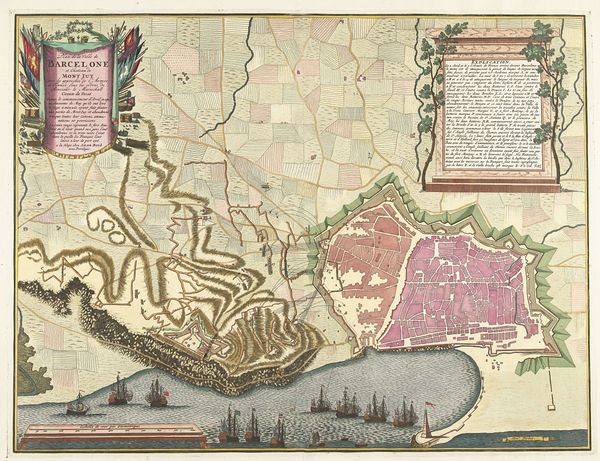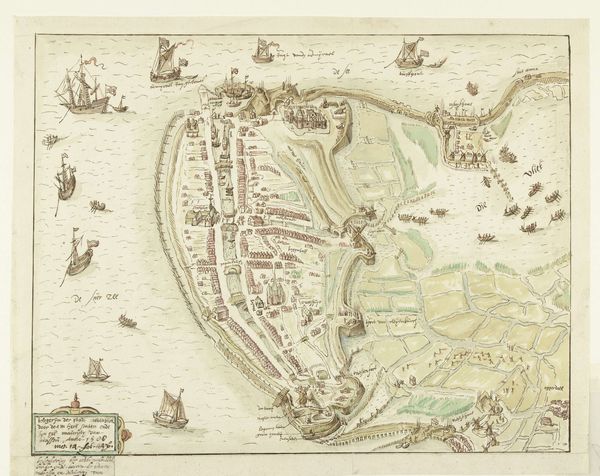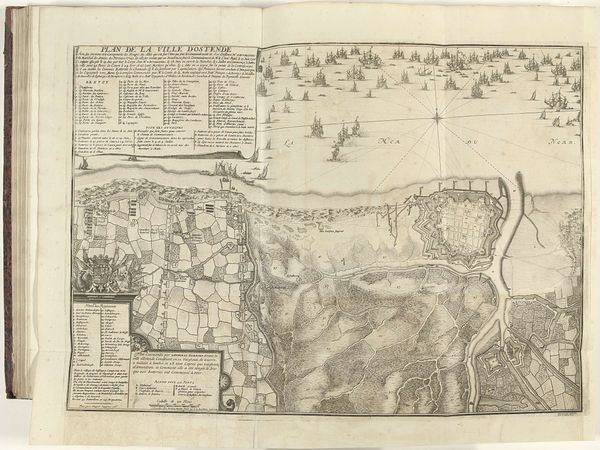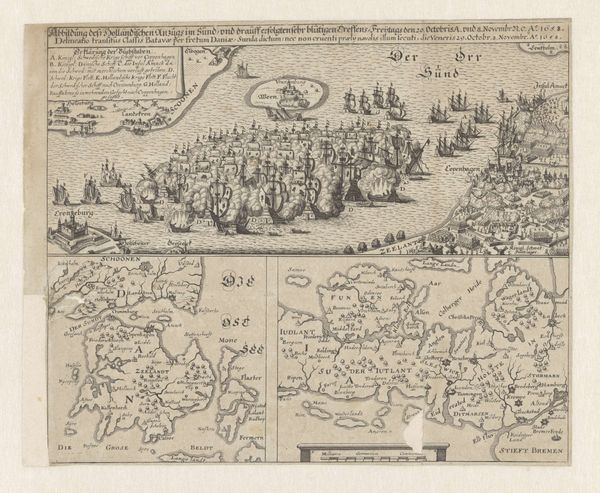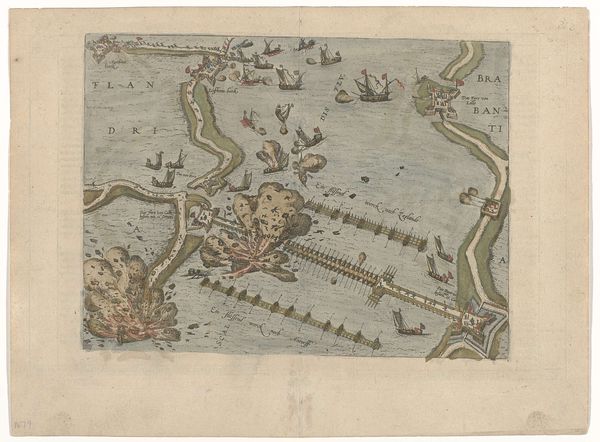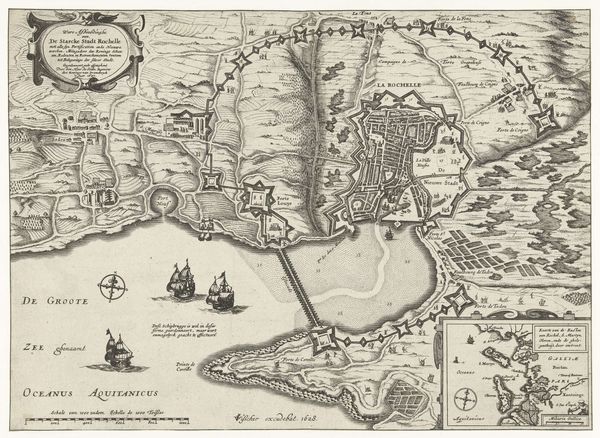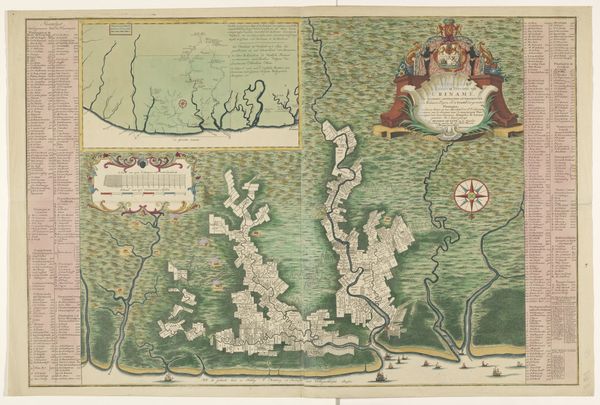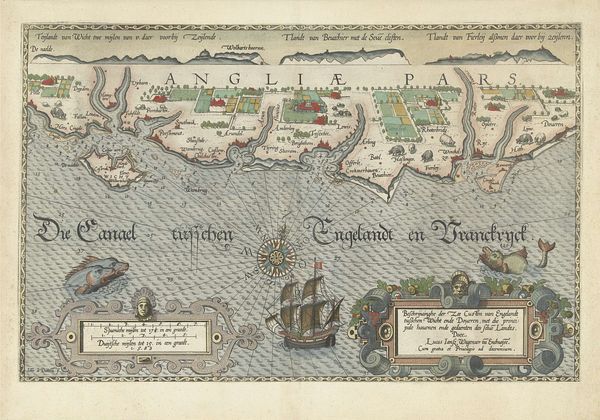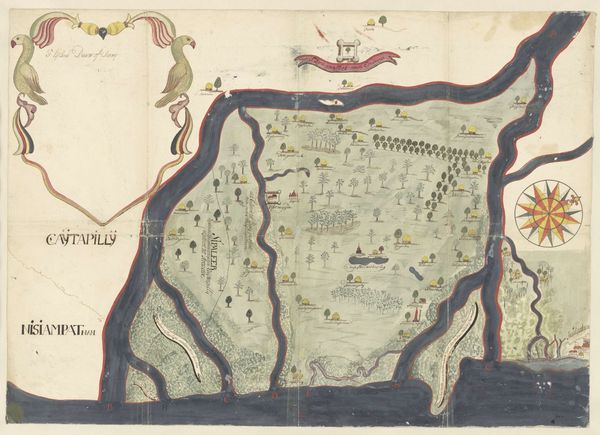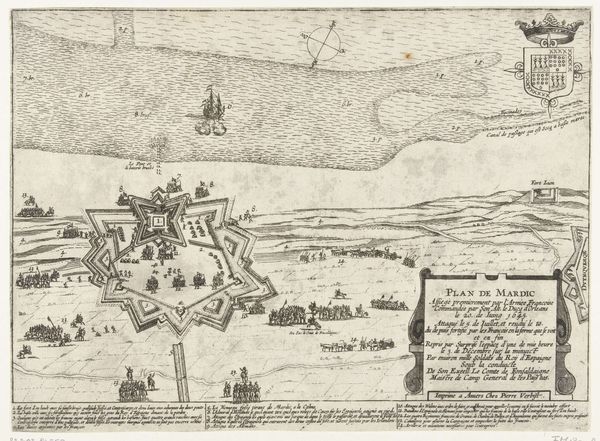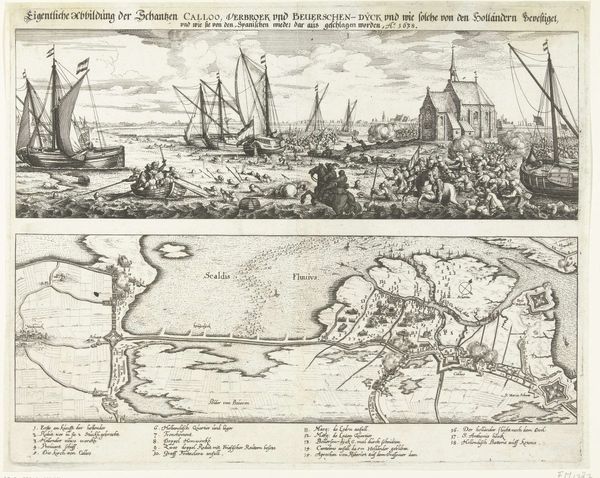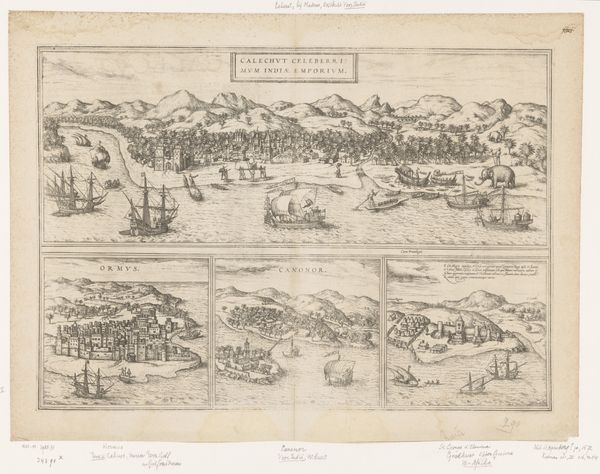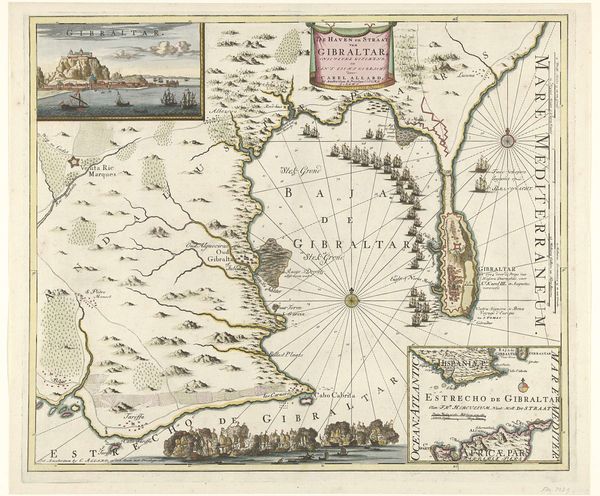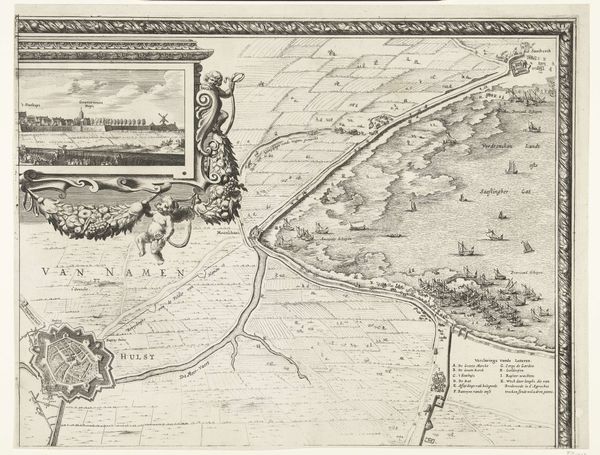
graphic-art, print, engraving
#
graphic-art
# print
#
cityscape
#
history-painting
#
engraving
Dimensions: height 533 mm, width 750 mm
Copyright: Rijks Museum: Open Domain
Curator: This print from 1707 by Jacobus Harrewijn, titled "Siege of Ostend," offers a bird's-eye view of the city and its naval blockade. Editor: My eye is immediately drawn to the incredible detail! The way the city’s layout, the network of waterways, and all those tiny ships are depicted suggests so much labour-intensive production. It’s meticulous. Curator: It’s a fascinating example of cartography serving a clear political purpose. The Siege of Ostend was a pivotal event in the War of the Spanish Succession. Images like these shaped public understanding of such conflicts. Editor: Right, beyond the grand narratives of war, the sheer materiality and technical skill is remarkable. Just imagine the layers of copper engraving and printing, the craft needed to reproduce this image at scale, its very tangible function! Curator: Precisely! These prints were powerful tools for projecting military might, and it served to construct a kind of 'imagined community' around shared victories or, indeed, defeats. Notice how the map highlights the fortifications. This city was intended to project an image of invincibility. Editor: The repetitive detail of those ships along the coastline does give a sense of the sheer scale of resources brought to bear on Ostend, too. I think you are correct; there's also a quiet, unacknowledged element about human labor embedded into it. Curator: These prints were distributed widely, appearing in books, broadsides, and individual sheets, so people far removed from the conflict could visualize it. The symbolic function of art influencing social perceptions should not be dismissed. Editor: But it wasn't solely about politics, either. What kind of papers did Harrewijn use? And which particular workshop allowed the creation of something so finely tuned? The paper and ink mattered to how effective and convincing an image could be! Curator: These questions about materiality are so critical for understanding the period. Without the specific paper, the particular inks, and their circulation in that market, the message becomes abstract, not something embedded within real-world materials. Editor: Yes! And perhaps if we knew more about how these items circulated and were actually received, we'd get a truer measure of what that symbolic capital accomplished at ground level. Curator: Studying prints like these allows us to really look into the social and political function of the piece, seeing it less as an artistic masterpiece and more as an essential tool in early modern statecraft. Editor: Seeing those links to materials also underscores what's been lost over time – all the makers, trades and systems that brought us here standing in front of this print in the museum today. Thank you.
Comments
No comments
Be the first to comment and join the conversation on the ultimate creative platform.
